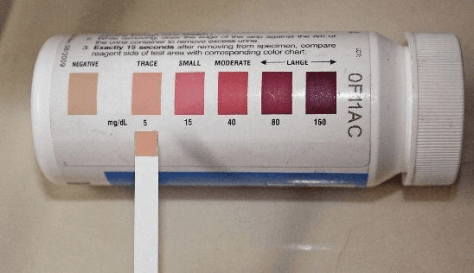This serves as a recollection of the events that happened in 2021 August when lil' one and 3 classes were given QO.
I copied the messages and saved them in the camera roll as a "souvenir" for lil' one too.
Ms CXXX, the Principal started a chatgroup for the parents of the affected children. She did very well as a leader of the school, she chose to keep us updated which means she'll be kept busy day and night. Thank you very much Ms CXXX
QO BROADCAST - MS CXXX
9th Aug @ 3.12pm
Dear parent, the school will create a broadcast Whatsapp group for parents of affected students from the S3 classes to provide updates where possible. In order to receive these broadcast messages, please add this number to your phone contacts list now. Thank you. ~school name~.
@ 4.41pm
Dear Parents and Guardian
Good afternoon. This is XXX, Principal/ ~school name~. Thank you for accepting this into your phone address book so that you can receive any broadcast message from me. I understand that MOH has followed up/ will be following up with you very shortly to serve the Quarantine Order.
To have your daughter undergo the quarantine process may be an anxiety-ridden one and we recognise that. I am setting this broadcast chat as a support platform for parents with the aim to
1) provide general information MOE HQ and MOH may provide to the school
2) provide an overview of school support to the girls' learning and socio-emotional development
3) share school announcements, if any
Should there be queries on any MOH-related process, we will try our best to assist. However, I appeal for your understanding that the school may not have all MOH-related information.
Amongst us, I am aware that there are some girls who have to undergo this QO experience for the second time… I am grateful that many of these parents who calm when the Form Teachers (FT) broke the news to you. We are in extraordinary times, it is a trying period for the school – students and staff. We do our best to support and weather this as a KC family, we will emerge _stronger together_.
If you wish to get in touch with us, pls call us at ~telephone number~ to reach my Vice-Principals Mrs XXX/ Ms XXX or me. You can also email us at our respective email addresses here: ~email addresses~
For any reason if you do not wish to continue to be on this broadcast list, pls send me a text.
@ 4.42pm
Over the next few days, your girl's FTs and I will do our best to assist you in the QO process. In order that I continue to support you during this period of their’ QO, I will raise some pointers here so that I can manage expectations ☺
Some admin pointers here:
1. We will broadcast to parents whose numbers are in the school records as the first number for data integrity, and to parents whose students are on QO.
2. I am the _only_ person manning this line, a channel I avail to whenever our girls are on QO. For now, as you are aware I do have to juggle amongst a few groups in this WA line, my response may not be immediate. I ask for your understanding and patience on this! 🙏
@ 6.19pm
*Update 1*
I understand many have received their Quarantine Order (QO). Some may serve their QO at home (if there is ensuite facilities), some may serve their QO at a Government Quarantine Facility (GQF). I learnt that, for GQF allocation, Certis may not be allocating all students to the same hotel due to supply issues. We have had parents accompanying their child in the QO. For students between 13 to 19, parents may sign letter to allow the minor to stay alone.
This is what I have found out from MOH website on QO:
https://www.moh.gov.sg/covid-19/faqs/faqs---leave-of-absence-(loa)-stay-home-notice-(shn)-and-quarantine-order-(qo)
For packing list, beyond all her personal daily necessities, do remember to pack in their learning materials, medication, learning/mobile devices and chargers. Not forgetting, their favourite soft toys/ snacks or books/ games to engage them during their down time.
MOH protocols I am aware of:
1) There are two swabs needed for the QO process: Entry and Exit Swabs
2) Entry Swabs may be conducted after the girls enter into Government Quarantine Facility (GQF), swabs may be conducted onsite at GQF. Or in past instance, MOH will send a driver to pick them from the GQF to the swab site. But increasingly I am hearing from our past cases, that swab is now done onsite at the GQF.
3) Exit Swab is conducted at the end of their QO.
4) Girls will have to upload their temperatures 3X daily through the Homer app
5) Sometimes MOH officers will make video calls to them to check that they are in their rightful quarantined settings
6) Parental consent may be needed for the swab tests (pls check with CISCO or MOH)
I beg the indulgence of some parents who may find this info familiar. I will continue to customise where I can on the specific situation of this group of QO girls..
@ 6.20am
*Update #2*
Also, I think this is a good link to go to. It gives a good handy list of FAQs:
How is a COVID-19 quarantine order different from a stay-home notice? And what happens if you are staying with family?
Here's a handy list of FAQs: https://cna.asia/3A80xpg
@ 6.22am
*Update #3*
A parent from an earlier case has shared the following info with me which I am in turn providing to parents here who are preparing to be conveyed to GQF. Just need to bear in mind that different hotels may have different services:
1) fridge, hairdryer and ironing board available in the room
2) Laundry service available. FOC for up to 4 pieces per person. Towels change every 3 days, bed linen, 7 days
3) Special meal choices available
4) Food delivery service ok. Family members can send home cook food but should be packed in disposal ware. Otherwise, she will have to keep the containers with her and take them home only upon “check out”
Further suggestions to add on to packing list :
5) Thermometer. Students have to record their temperature 3 times a day. Caregiver should bring one too.
6) Extension cord for the multiple gadgets the kids and caregiver might have
7) Face masks. Needed whenever we open the room door to collect / dispose food, rubbish or laundry.
8) Room spray or Lysol disinfectant spray may be useful (for toilet runs!)
Hotels may provide but they might also be overwhelmed.
May I request that you *let the FTs know* if your girl is serving QO at home or at a GQF once you have confirmation from Certis pls. And also which Hotel when she is eventually conveyed.
That’s all I have for today. I will update here should here be noteworthy information which will be useful for the QO process. Thank you and keep well.
10th Aug
@ 5.17pm
*Update #4*
Good afternoon. I am happy to share that most of the girls’ entry swabs have been done. And for those done, all negative! For girls who have not been contacted for entry swabs, pls let their FTs know and I will follow up with MOH.
It appears that many of our girls have been conveyed to the GQF already, with just a handful awaiting for their transport. Currently, it looks that the spread of the GQF is within our school vicinity and in city areas. I understand some girls are serving their GQF alone. Do remind them to *secure their doors at all times* and a little reminder that they are not to visit each other if they happen to be at the same GQF! QO is a legal order!
In our previous QO experiences with our staff and students, some of them are tagged (a little wrist tag) for the QO. This is basically a tracker, as I understand it.
Do let us know if your girl have any difficulty uploading her temperature through the Homer App. I understand that it will have to be the _number which MOH has first contacted you_ to be registered in the Homer App.
Back in school, we have also just completed our Mandatory Swab Test smoothly. The first batch of results (comprising largely the staff’s) has also been received, with happy news!
That’s all I have for today now. Take Care and Keep Well.
@ 5.46am
*Update #4a*
Some parents have texted me that their daughters are still awaiting or not received the calls to be conveyed to a GQF _yet_ despite the decision from MOH that it is a GQF. May I ask that you alert their FTs. I will request the *FTs to collate* so that I can send a chaser to MOH. Just to prepare parents, in our previous case, a handful of girls were conveyed to GQF a few days later in spite of the (day and night chasers!). FT collation will be a lot easier for me😅 Thank you for your understanding
12th Aug
@ 6.28pm
*Update #5*
Thank you for your patience and understanding! By now, save for 3, all who were supposed to be conveyed to a QGF have all been conveyed. The outstanding 3, pls be assured that I have been on MOH's heels! The FTs or I will reach out to you personally.
Regarding swabs results, a parent shared with me that you can also access _Health Hub_ for your girl’s PCR result, lest you are waiting in vain for a text message. It is a similar experience for us at ~abbreviated school name~ on the day of our swabs op too - staff in ~abbreviated school name~ received their Negative results – some from SMS and some from their Health Hub. It continues to confound us on the difference and it didn’t matter! What matters is that we are Negative! 🙏
It’s been a trying period for us, but I know it is also the same for you parents as well. So if you haven’t video called your girl, or given her a virtual hug or send her favourite food over, do take this time to bond with your girl. I would like to end with this message from a parent, “The darker the night, the nearer the dawn”. Powerful imagery and message for us here in ~abbreviated school name~! And we continue to trust and have the faith that we will weather together as a ~abbreviated school name~ family. Your kind words and support meant a lot to us.
13th Aug
@ 10.14pm
*Update #6*
Good evening. I am happy to report that all who are to be conveyed to GQF have finally done so! For majority of our girls, this would have been their third/ fourth day being quarantined. Perhaps some of them might feel a little homesick, I hope this coming weekend would be kind to you and avail some time for you to connect with your girl.
I am excited to share this clip which my staff had sent me. This was aired over Symphony 92.4 over the evening drive earlier. I encourage you to share this with your daughter and let them know that the teachers are trying innovatively to let them know they are on our minds!
Since it is late and I do try to pace out my updates, I will broadcast the QO exit process tomorrow instead and the info is still in good time for you.
Have a good night!
** 2 videos on radio dedication **
14th Aug
@ 6.45pm
*Update #7*
With the girls exiting their QO on *Thursday 19 August*, I would like to share some important information here:
_Transport back from GQF_
Conveyance is only provided from home to the GQF in view of the health risk measures. However, once exited from GQF, no transport, as I understand it, is provided. Accompanying parent and child are to make their own way home on their own. Parents with child staying alone at GQF, pls note this.
_Exit Swabs_
The all clear to exit QO is given only upon negative exit swab.
Here is the process in the lead-up to the successful transition out of the QO which I am sharing here for your advance info. Your girls (through your mobile line which MOH uses to contact you) must
1. receive their notification for exit swab,
2. receive exit swab and also
3. exit swab results.
For most of them, this would be
• notified on 17 Aug,
• swabbed on 18 Aug and
• received negative result/exit on 19 Aug
Essentially, it is [Exit Day -2 ] for notification of exit swab.
So, let’s monitor 17 Aug closely. The FTs will collate the responses from the girls. As and when they have received *1* and *2*, pls get her to inform both FTs. We plan to collate at end of day (17 Aug) so that we can escalate asap to MOH if she has not received 1 and 2.
It’s been an eventful week for many of us. I hope you have been able to rest a bit this weekend.
We must remember to care for ourselves, centre ourselves so that we can in turn, care for our children.
Sharing our Founder, Blessed Nicolas Barre’s words as the day winds down:
_Whatever happens, remain always in peace and trust in God_
17th Aug
@ 10.47am
*Update #8*
By now, most of your girls would have received one e-care pack from the ~abbreviated school name~ Family through their FTs. It is a e-voucher of sweet treats which the girls can request delivery to their GQF or homes. This is to be redeemed online and delivered to Home/GQF. In our previous QO cases, we had the luxury of student leaders coming together to pack the physical care packs and teachers to double up as delivery folks. In this round, with the intermittent HBL we have been on and a third of our staff on quarantine, it will have further taxed our manpower to repeat what we did. Our teachers have innovatively explored this alternative (see image below👇) and I am glad to be able to bring to the students. For students exiting QO soon, it is advisable that the sweet treats be delivered to their homes, instead of the GQF. I hope the carepack will brighten their day. Pls tell our girls we love them and they do themselves proud to get through this period positively!
With love, The ~abbreviated school name~ Family.
@ 10.48am
@ 11.13am
*Update #9*
Further to our plan shared with you in _Update 7_, we will be alerting MOH based on our collation as of *5pm* this evening for all who have not received the notification for exit swab. I also hear that for those who are in the GQF, the notification may be on the same day of the swab. I’d be grateful for your girls to contact her FTs as we begin collation at 5pm later for us to submit the names to MOH (for those not contacted yet)
If you happen to have received the notification _after 5pm_, pls also just inform their FTs anyway, so that we can help monitor this list, for and with MOH on the go!
Currently it looks that the girls have progressively received their exit swab notification and swabs too. I think the exit process is making good progress! In the event, for any reason it is not the case for your girl, pls reach out the FT who are collating. Regardless, let’s continue to still keep the spirits up for her and with her, in spite of our own anxieties (and frustrations). We are on our final stretch!
I will provide the next broadcast tomorrow regarding the physical exit out of GQF. Until then, keep well!
18th Aug
@ 12.09pm
*Update #10*
*Exit Swabs*
Almost all girls have been swabbed and they are progressively receiving their negative results! Notification is through SMS or Health Hub (so, pls check Health Hub App). Results should be posted today.
*Impt Info for Exiting out of QO*
_Those on Home QO_ - Person Under Quarantine (PUQ) who have -ve result for exit swab, they will receive a notification on the Homer App, where they will automatically exit at 12noon on day of QO expiry.
You can find out more info in this link:
https://www.moh.gov.sg/covid-19/general/faqs/faqs---for-persons-under-quarantine-(puq)-on-home-quarantine-order-(hqo)-who-are-fully-vaccinated
_Those at GQF_ - PUQ with -ve exit swab result, please wait for hotel to get update from MOH on day of QO expiry. PUQ can inform front desk that they are ready to check out and hotel will also chase MOH if no word from MOH. Hence stay in the room till call from front desk! Unlike those on HQO, exit may or may not happen at noon, pls check in with the front desk. Also, pls ask front office or get your girls to ask the staff escorting them out, where you should pick her up (hotel driveway, for instance?). Different hotels have different exit points, as I understand.
I will have a final broadcast tomorrow, to ensure all have exited safely. We are on a home stretch and let us pray that it will be smooth. Thank you.
19th Aug
@ 1.10pm
*Final Update*
This is the final update of our QO journey with our girls. Many are either progressively checking out and have already checked out. Parents, pls give them a good embrace for us when they are home. For our HQO girls, no hugs are too many for you too at home!
We look forward to seeing them back in school *tomorrow (20 Aug)* ! I will cease broadcast after this. If you need to get in touch with the school leaders, you can email us or call us at the school number (details in my Update 1). You can also reach out to the FTs as well. I will be turning off the phone _after_ today and _after_ deleting your numbers.
Thank you, parents, for all your patience and cooperation. I am grateful to have journeyed with you. In spite of the context, I see the silver lining of this experience... that perhaps, we have grown closer to our girls, have enabled them to see that we are here for them, or perhaps, they have discovered something invaluable about themselves they didn't know they have.
As we move into an endemic state and with the revision of the QO policy (which takes effect 19 August today – PG notification to all parents yesterday), I hope for the beacon of light to come for many of us. Covid-19 has caused much disruption to lives and livelihoods. These are tough times, and as the significant adults for our children, we want to continue to help them (and help ourselves) to distill from this experience and appreciate that we have all grown from this experience. Anxieties aside and SMM notwithstanding, we want to help our children grow up as normally as we can, be connected to one another, we remain hopeful that as a nation, we are together in battling this, playing our respective roles as our nation implements our Covid-19 endemic road map. And then, I look to years later, when they can recall this chapter of their lives, and say that we have been for them, and that the experience has shaped them for the better.
Nicolas Barré says, _a little love makes everything easy._We want to remember the front liners (our Certis folks, the swab teams, the MOH folks) who have been confronting this for the past 18 months… May we all connect with each other with patience and love.
We look forward to giving our girls a welcome Milo drink at Uncle Jeffrey’s stall during their recess tomorrow. Code name is *Dinosaur QO* (_pls share code name with them, only they get it! And only on _20 August!_) ☺️
God bless all of us, and ~abbreviated school name~. _~school motto~ _
****************************************
Link to this topic :
10th Aug - Somebody Striked Toto











































